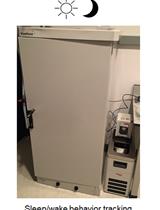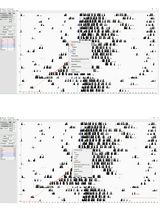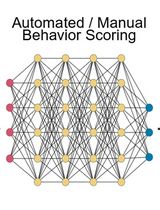- EN - English
- CN - 中文
Measurement of Sleep and Arousal in Drosophila
果蝇睡眠和觉醒的检测
发布: 2019年06月20日第9卷第12期 DOI: 10.21769/BioProtoc.3268 浏览次数: 7707
评审: Adler R. DillmanXiaoliang ZhaoAnonymous reviewer(s)
Abstract
Sleep is a conserved neurobehavioral state observed in animals with sufficiently complex nervous systems and is critical for survival. While the exact function of sleep remains unknown, the lack of sleep can have a range of physiological and behavioral effects. Studies in invertebrates and vertebrates have identified conserved neural mechanisms and cellular pathways in control of sleep, wakefulness and arousal. Methodologies to measure sleep have ranged from EEG recordings in humans and rodents to in-depth analysis of locomotor patterns in flies, fish and worms. Here we focus on sleep measurements using activity monitoring in the highly versatile experimental model system, Drosophila melanogaster, which is amenable to a number of genetic, physiological and behavioral manipulations. Further, we also describe methods used to manipulate sleep and wakefulness to understand the neural regulation of sleep and how organisms balance sleep, wakefulness and behavioral arousal. Sleep as a behavioral state is regulated by a number of factors including food, environmental conditions, and genetic background. The methodologies described here provide, a high-throughput approach to study neural regulation of sleep and factors that affect this complex behavior.
Keywords: Drosophila (果蝇)Background
Sleep is defined as a state of quiescence that is associated with periods of inactivity, altered brain activity, and heightened sensory threshold. Across species, sleep is tightly regulated by the circadian clock and homeostatic mechanisms, and these processes have been studied extensively in the context of sleep regulation (Hendricks et al., 2000a and 2000b, Shaw et al., 2000, Donlea et al., 2017, Keene and Duboue, 2018, Bringmann, 2019). While the importance of these processes in sleep and wake cycling cannot be overstated, the dynamic regulation of sleep, wakefulness and arousal by other behavioral drives like social engagement and nutritional status have received less attention.
We recently investigated how sleep is regulated in light of competing behavioral drives like courtship and found that sleep is suppressed when the courtship drive is elevated, and courtship behavior is suppressed when sleep drive is increased by deprivation (Aso et al., 2014, Sitaraman et al., 2015a and 2015b, Chen et al., 2017). Here we describe the methods to measure and manipulate sleep amount (by mechanical deprivation and pharmacological treatments) and structure using the high-throughput activity monitoring system that is relatively easy to set-up and comparable to high-resolution video monitoring studies. The sleep recording protocol described here uses the well-established activity monitoring system relying on occlusion of infrared beam by movement of singly housed flies. While a previously published article describes the use of Drosophila activity monitoring system for circadian analysis and sleep, here emphasis is placed on the actual fly rearing, set-up of the activity monitors and circadian analysis (Chiu et al., 2010). Here, we describe the experimental set-up specific to sleep measurements and the detailed analysis of the locomotor data in interpreting sleep amount and architecture. The experimental amenability of the fruit fly system has and will continue to provide key insights into how sleep is influenced by neuronal and environmental factors with careful attention to experimental design, execution, and data interpretation.
Materials and Reagents
- Cheesecloth (Pure Grade 50 100% Unbleached Cotton Cheesecloth Strain, 2 Yards, www.amazon.com)
- Petri dishes (100 x 15 mm, Genesee Scientific, Olympus Plastics, catalog number: 32-107)
- Pipe cleaners (Creativity Street Chenille Stems/Pipe Cleaners 12 Inch x 6 mm, Black from https://www.amazon.com)
- Sleep tubes (TriKinetics Inc., catalog number: PPT5x65 Polycarbonate)
- Rubber bands (Staples)
- Paint brush (Round Pointed Tip Nylon Hair, www.amazon.com)
- Fly tubes and plugs (Genesee Scientific, catalog numbers: 32-116BF and 49-102)
- Paper towel (Kimberly-Clark Kimtech Science Kimwipes, Amazon.com)
- Drosophila (Bloomington Drosophila Resource Center, https://bdsc.indiana.edu)
- Paraffin Wax (Performa Unscented Paraffin Wax Beads from https://www.amazon.com)
- Sucrose (Sigma, catalog number: S8501)
- Agarose (Sigma, catalog number: A9539)
- Dextrose (Sigma, catalog number: G8270-1KG)
- Yeast (Genesee Scientific, catalog number: 62-108)
- Gelidium Agar (Genesee Scientific, catalog number: 66-105)
- Cornmeal (Genesee Scientific, catalog number: 62-100)
- 10% Tegosept (Genesee Scientific, catalog number: 20-258)
- 70% ethanol (Sigma, catalog number: 793213)
- Molasses (Genesee Scientific, catalog number: 62-118)
- Propionic acid (Genesee Scientific, catalog number: 20-271)
- (2-hydroxypropyl)-β-cyclodextrin (Sigma, catalog number: H107)
- Gabaxadol (THIP) (Sigma, catalog number: T101)
- Fly food (see Recipes for Dextrose and Molasses media)
- Fly food with molasses for sick stocks
- Dextrose Fly food for sleep tubes
Equipment
- Thermometer (Easy-Read® thermometer) (Sigma, catalog number: Z425313)
- Stir bar (Fisher Scientific, catalog number: 14-513-83)
- Refrigerator (Samsung from Home Depot or Best buy)
- Paraffin Bath (True Glow by Conair Thermal Paraffin Bath from https://www.amazon.com)
- Drosophila Activity Monitors (Trikinetics)
- Incubator (Percival, DR 36VL)
- Computer (Mac or PC work with binning and analysis software)
- DAM Extension cables (SPLT5: 5-way splitter and CAB10: 10” cables, Trikinetics.com)
- Stereo microscope (Leica M80, Zeiss Stermi 2000, Nikon SMZ745 or any standard stereoscope)
- Light source (Dolan Jenner, KL300 LED or Goose neck)
- CO2 fly pad (Genesee Scientific, catalog number: 59-114)
- CO2 tank and regulator (Airgas)
- Multi-tube Vortex (Troemner, catalog number: 945007/945008)
Software
- DAMFileScan Software (TriKineticsDAMSystem)
- MATLAB (MathWorks, Natick, MA) with signal processing toolbox
- Prism (GraphPad)
Procedure
文章信息
版权信息
© 2019 The Authors; exclusive licensee Bio-protocol LLC.
如何引用
Driscoll, M. E., Hyland, C. and Sitaraman, D. (2019). Measurement of Sleep and Arousal in Drosophila. Bio-protocol 9(12): e3268. DOI: 10.21769/BioProtoc.3268.
分类
神经科学 > 行为神经科学 > 睡眠与觉醒
您对这篇实验方法有问题吗?
在此处发布您的问题,我们将邀请本文作者来回答。同时,我们会将您的问题发布到Bio-protocol Exchange,以便寻求社区成员的帮助。
提问指南
+ 问题描述
写下详细的问题描述,包括所有有助于他人回答您问题的信息(例如实验过程、条件和相关图像等)。
Share
Bluesky
X
Copy link












